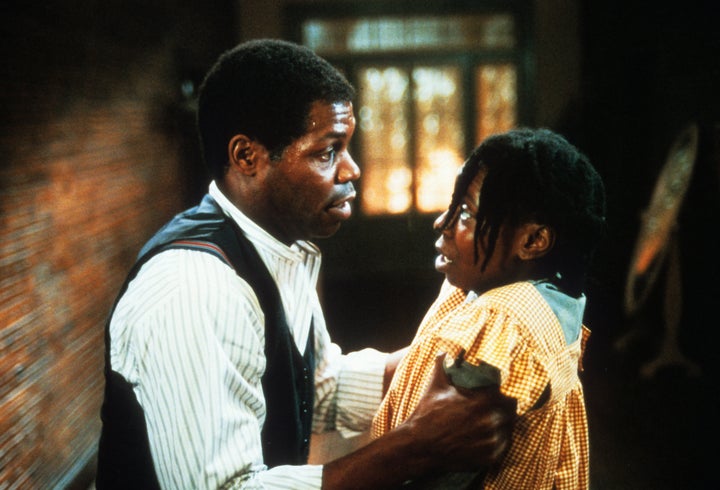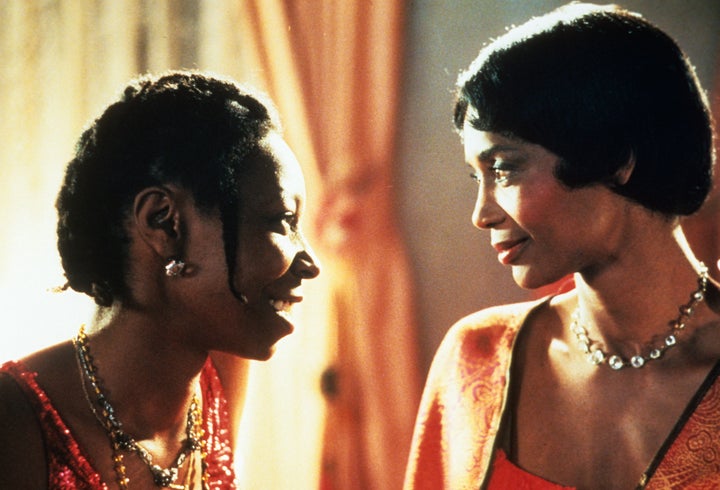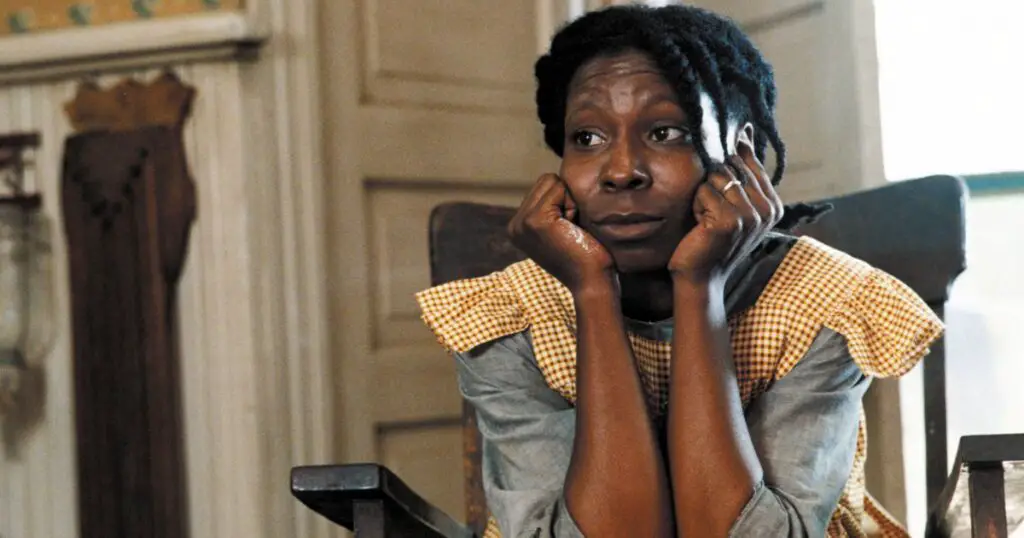It’s pretty much impossible to avoid “The Color Purple” in a Black household. The film adaptation of Alice Walker’s Pulitzer Prize-winning novel is quoted to death throughout popular culture: characters quote snippets in other movies — think about Tyler Perry’s Madea and the long-running homage to Sofia; her most iconic line is also the cathartic opening bar of Kendrick Lamar’s Grammy-winning hit “Alright.”
My surface-level feelings about “The Color Purple” growing up was that it was a work about Black female suffering. As I dealt with the first undiagnosed signs of lifelong clinical depression, I mostly avoided the novel and the film since I had a deep desire to avoid any more sadness. Internalized anti-Blackness also played a part; I spent much of my teenage years pushing down anything that made me different from my peers at my rich, white high school. It always felt like I was one emotional reaction or angry outburst away from being labeled as other, and seeing the women of “The Color Purple” get punished for living didn’t help. I already had enough attacks on my self-esteem to deal with; I didn’t want to add on any misconceived notion that I was destined to suffer.
That changed in 2010 when my mom bought us tickets to see Fantasia Barrino perform as Celie in the musical’s tour stop at the Pantages Theater in Los Angeles, California. I could feel her excitement on our drive up to Hollywood as she prepared to share an adaptation of a piece of art she’d loved since she was a woman in her 20s.
When the theater’s curtain rose, I felt a sense of discomfort within me. I saw a girl my age, or a bit younger, with a protruding belly, talking sweetly to three Church Ladies before they turned around to gossip about her. The Church Ladies showed up every now and then as a Greek chorus to provide exposition through repeated petty gossip. To this day, I hate the Church Ladies in any version of the work, hemming and hawing without offering any actual support to the abused women they’re clucking about.
By the next scene, when Pa takes away Celie’s second child right after she gives birth, revealing that he was the biological father, I was shaken. I was a relatively sheltered child, and before that day, my ideas of evil were limited to the YA book series I loved, the unambiguous, super-powered Big Bads of “Percy Jackson,” “Harry Potter,” “Twilight” and “The Mortal Instruments.” I’d never had to encounter such human brutality and ultimate selfishness, and a little part of my innocent mind died.
Pa wasn’t the only villain. Mister was just as bad. I was too focused on the abuse he was committing against Celie to begin to understand the impetus behind his actions. I had nightmares about that yellow-painted set from Celie’s birth scene for several nights after we saw the production. I’d been trying to wean off the habit of leaving my TV on when I went to sleep, but I sought comfort in the glow for the next few weeks.

Michael Ochs Archives via Getty Images
In 2015, my senior year of college, “The Color Purple” was pushed up to the forefront of my mind thanks to the musical’s Broadway revival, which introduced Cynthia Erivo to U.S. audiences with her stunning portrayal of Celie. I had also spent my junior year in college rediscovering my Blackness, and started to unlearn a lot of self-loathing. This was just the start of a years-long process, but I was finally in the headspace to get past my childhood distress and read Walker’s novel for the first time. I wanted to finally find a personal connection to the story.
The novel is a complex, life-encompassing work. Still, I found myself shocked at how little of the book I felt had made it into my memories of the stage musical. I was engrossed as I followed Celie and Shug Avery becomi the loves of each other’s lives (and sharing a sexual relationship to an intensity that still hasn’t made it to the screen). So many pages were dedicated to Nettie’s life in Africa that it could have been a whole other book. More than anything, I fully understood Celie’s journey with faith after reading the novel, and it unlocked the emotional resonance of the whole story, as I saw a connection to my own struggles with organized religion.
I didn’t grow up going to church, and whether it was intentional or not, my parents raised me to question how people use interpretations of the Bible to control or subjugate others through systems of religious worship. I’ve seen from afar how the Black church props up certain leaders and church ladies to judge people and consider themselves as better than others, even when unethical behavior or corruption often runs through their ranks.
I also fundamentally disagree with the church labeling people as “sinners” or “abominations” because of their sexual orientation or gender identity. I’ve sat in a Sunday service, full-out weeping through the bulk of the service, and abruptly felt shocked and unwelcomed as the pastor began preaching about how gay people have “strayed from God’s path.”
Like many Black millennials, I don’t want my spirituality to live within an institution that preaches love but applies it selectively. Still, I’ve also wondered how my life would be different if I had the support of a church community, especially in a time where the loss of in-person communities and third places has exacerbated a loneliness epidemic among people my age.
Celie begins her life with the same conception of a white capital-G God that people of color have recently begun to question as the mainstream representation of Christian religion. Even after her children and Nettie are taken away, she writes to this God and follows his word, staying submissive to her husband’s abuse as the Bible says.
“This life soon be over,” Celie says to Sofia, in the same scene as the latter’s infamous speech. “Heaven last all ways.”
Then Celie falls in love with Shug Avery, the “loose woman” who found happiness and fulfillment outside of traditional life. Shug introduces Celie to the idea that God of the judgmental church doesn’t have to rule their lives. Instead, Walker writes, “God is everything, say Shug. Everything that is or ever was or ever will be. And when you can feel that, and be happy to feel that, you’ve found it.”

Michael Ochs Archives via Getty Images
Shug points out the glory of nature and the color purple and says that God just wants you to show love to it and the people closest to you. She knows that her pastor father doesn’t agree with her blues singing, but God understands why she does it, and He still loves her. By the end of the book, after Celie has found joy and purpose, her letters addressed “Dear God” have evolved to “Dear Everything.” Reading Celie’s progression felt like an epiphany that God can be anything, and the church doesn’t have to dictate whether or not you’re following your faith.
Last Christmas, I drove my mom to see Blitz Bazawule’s screen adaptation of the stage musical, and the circle of us teaching each other more about this work continued. As we left the theater, she marveled at how much more she noticed while watching this movie, mentioning storylines the 1985 film skipped, like Celie visiting Sofia in jail and Mister forming a friendship with Celie.
As an entertainment journalist and advocate for the power of representation in pop culture, I felt fulfilled to see the work helmed by a Black director for the first time. Bazawule’s film is the closest I’ve come to the swell of feelings I experienced while reading Walker’s novel, and I’m so grateful it exists to lift my spirits.
2023 was an exuberant year of reclaiming the hard-earned joy within “The Color Purple.” I was moved to tears several times as I attended a virtual event for the trailer premiere, where Oprah Winfrey and Bazawule showcased their vision for the film through a triumphant lens. I was floored by the majestic performances by Danielle Brooks, Taraji P. Henson and Fantasia Barrino all those years after I saw the latter on stage and clogged the phone lines voting for her on “American Idol.” I’ve kept up regular listenings of all three musical soundtracks; tracks such as “Keep It Movin’,” “Hell No!,” “What About Love?” “The Color Purple” and “I’m Here” have become my gospel.
Fourteen years after “The Color Purple” first gave me nightmares, I realized that Celie’s story is one of hope and happiness in building your own community and loving on them even as oppressive systems try to take away your joy. The story is about the strength of the sisterhood between Celie, Nettie, Shug, Sofia, Squeak, and all Black women and femmes and people who actively choose to free themselves from patriarchal norms. It shows that even though society will call us poor and ugly, we’re still here, and we’re here for each other.

